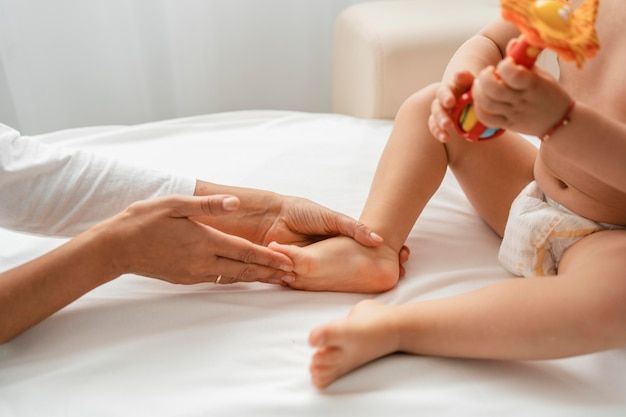Childhood is a period of development, activity, and growth. Bones extend and reform as children become taller and stronger. A critical aspect of this process is the growth plate, a soft spot of developing cartilage located in the ends of long bones. Though these plates are crucial to the development of healthy bones, they’re also prone to injury.
Growth plate fractures (also referred to as physeal fractures) may be caused by falls, sports, or accidents and happen more frequently in boys, particularly during growth spurts. Although they appear like regular fractures, they need special care and immediate treatment because they can impact the future bone growth and alignment of a child.
What Is a Growth Plate?
A growth plate, or physis, is a band of cartilage at the end of long bones in adolescents and children. It develops bones and establishes the shape and size of the bone when mature. Growth plates exist in bones such as:
- Femur (thigh bone)
- Tibia and fibula (lower leg bones)
- Radius and ulna (bones of the forearm)
- Humerus (arm bone)
Because cartilage is less firm than bone, these regions are more vulnerable to injuries—especially in active, sports-playing children.
What Do Growth Plate Injuries Cause?
Growth plate injuries may be due to:
- Falls or trauma during sports or play
- Twisting injuries, as in football or basketball
- Overuse injuries in gymnastics or running long distances
- Motor vehicle crashes or severe trauma
Boys aged 10–16 years are particularly vulnerable, commonly because of their participation in impact sports during the years of maximum growth.
Growth Plate Injury Types
Physicians tend to categorize growth plate injuries according to the Salter-Harris classification, where there are five predominant types (I to V), based on the severity and position of the fracture in relation to the growth plate and the surrounding bone.
Type I & II are prevalent and not so severe.
Type III, IV & V can affect bone and joint surfaces and tend to need more accurate treatment in order to prevent long-term problems.
Signs and Symptoms
It can be tricky to diagnose a growth plate injury compared to a sprain or bruise. Watch out for:
- Pain and tenderness around a joint
- Swelling or bruising
- Difficulty moving the limb or putting weight on it
- Warmth or redness around the area of injury
- Visible deformity (in more severe cases)
If your child has these symptoms following a fall or injury, best to have a pediatric orthopedic expert consulted.
Why Timely Treatment Is So Important
Children’s bones are still developing, unlike bones in adults. An untreated or poorly treated growth plate injury leads to:
- Irregular bone growth
- Discrepancies in the length of the limbs
- Angular deformities
- Permanent stiffness or joint dysfunction
- Early detection and immediate treatment facilitate proper alignment and avert long-term complications.
How Are Growth Plate Injuries Treated?
Treatment varies with the severity and type of the injury:
Mild injuries (Type I or II): Treated by immobilization in casts or splints.
Moderate and severe injuries (Type III, IV, or V): Require realignment (reduction) or even surgery to put bones in their correct position and the direction of growth.
Follow-up treatment is necessary to check on healing and growth in the future.
Rehabilitation and physiotherapy can also be advised in order to regain movement and strength once the bone has healed.
Why Consult a Pediatric Orthopedic Surgeon?
Not only are pediatric bones smaller, but they are growing and developing. A standard orthopedic solution may not account for potential growth and alignment. A pediatric orthopedic surgeon possesses specialized education to heal growth plate injuries in a manner that protects a child’s growth.
Conclusion
In general, growth plate injuries in kids could be trivial but could have permanent effects if not addressed timely. As there is bone development happening in these regions, timely inspection and treatment by an expert are a must. Proper intervention at the right time secures normal bone growth and avoids long-term deformities or mobility problems.
If your child has suffered an injury near a joint or you suspect a growth plate issue, consult Dr. Rajeev Nirawane, a trusted Pediatric Orthopedic Surgeon in Pune, located at Hadapsar and Wakad (Dange Chowk – Khinvasara Trade Center). With years of experience in managing growth-related bone injuries, Dr. Nirawane offers precise, child-friendly care that protects your child’s bone health and future mobility.
